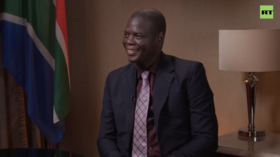Scientists discover our sun’s long-lost identical twin, which could lead us to Earth 2.0

An international team of scientists and astronomers has discovered an almost identical twin to our sun, in a promising development which could help narrow down our search for another habitable world.
It is estimated that up to 85 percent of all stars could be binary pairs (or triplets or quadruplets) as stars tend to form in stellar nurseries, which are vast clouds of gas and dust which can often form thousands of stars.
With this in mind, using cutting-edge techniques including the latest astrometric data from the ESA’s GAIA space observatory, scientists at the Instituto de Astrofísica e Ciências do Espaço (IA) in Portugal believe they have found our sun’s binary sibling some 184 light years away.
“Since there isn't much information about the sun's past, studying these stars can help us understand where in the Galaxy and under which conditions the sun was formed,” said astronomer Vardan Adibekyan of IA.
Like our sun, HD186302 is a G-type main-sequence star. It’s slightly larger than its supposed sibling, with roughly the same surface temperature and luminosity and is also about 4.5 billion years old, with a similar chemical composition.
These details are crucial as our sun’s size, age, temperature, luminosity and chemical composition offer the best, and seemingly only, conditions for sustaining life as we know it in the universe at present.
READ MORE: 'Catastrophic’ megafloods created Mars’ giant canyons – study
“If we are lucky, and our sibling candidate has a planet, and the planet is a rocky type, in the habitable zone, and finally if this planet was ‘contaminated’ by the life seeds from earth, then we have what one could dream - an Earth 2.0, orbiting a Sun 2.0,"Adibekyan added.
#Earth to be battered by ‘dark matter hurricane’ for next million years https://t.co/icmXUNkXUApic.twitter.com/9Oa5syV2oa
— RT (@RT_com) November 14, 2018
A previous contender for long-lost solar sibling was an F-type star HD162826 which was discovered in 2014. F-type stars are blue to white in color, burn hotter than our sun and have a larger mass averaging 1.7 times the sun. They are also much brighter.
Now IA scientists plan to scour the surrounding cosmic countryside around the newly discovered potential twin for signs of any planets that may look conspicuously like our own.
Massive floods at Mars’ now barren lakes may have carved out distinct canyons millions of years agohttps://t.co/YgAg5snqnGpic.twitter.com/RNpKSg57MN
— RT (@RT_com) November 18, 2018
Like this story? Share it with a friend!















